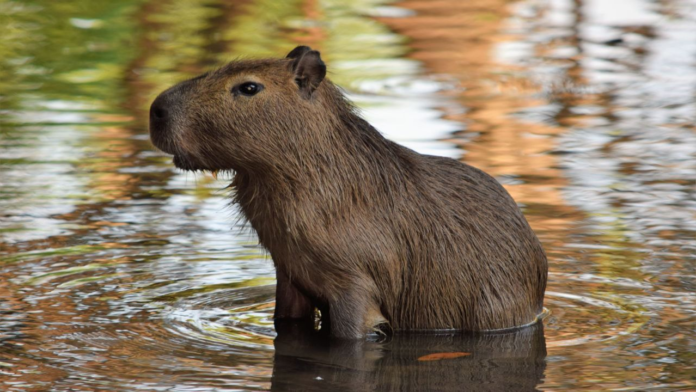By Sophia Byl
Icons of pop culture. The largest rodents on the planet. Weird-shaped heads. Capybaras are known for a couple of reasons here and there, but underneath that coconut-esque exterior hides some impressive claims to biological fame. Capybaras are representatives of the world’s aquatic mammal population – different from marine mammals, like dolphins and whales, as capybaras spend some of their time on land too. This gives them something in common with beavers, otters, and hippos, but capybaras are most closely related to the domestic guinea pig in terms of genetics. Both are rodents with big beautiful buck teeth that are most at home in social packs – but don’t try taking your pet guinea pig for a swim. These similarities disqualify the capybara’s own unique characteristics though, or their possible roles in helping us search for more environmentally friendly energy sources.
Capybaras are herbivores, so their diet is mainly grass and fruit they find around their watering holes. They happen to be quite picky eaters, and will ignore certain species of plants they dislike. Yet for the amount of criticism they lend to their diet, they don’t mind eating their own poop or bringing food back up to their stomach to chew a second time (known as rumination). These tendencies are thanks to the capybara’s need to extract as much nutrients from its meals as possible. It’s a big animal that needs all the energy it can get, especially during dry seasons when food is hard to come by.
If we compare these eating habits to that of guinea pigs, the only similarity is the diet itself. Guinea pigs love their fruits, veggies, and hay, but will chew it from side to side, while the capybara’s jaw moves forward and back, which is a bit of a strange thought. Perhaps the most important difference is how each rodent’s stomach processes nutrients. Guinea pigs owe their ability to digest cellulose in grasses to bacteria that live in their stomach, a classic example of mutualism (symbiosis where both the guinea pig and the bacteria benefit). However, the capybara possesses its own enzymes to break down cellulose – and that’s where renewable energy sources come into question.
The diet of the coconut doggy has a lot of cellulose, being mostly plants. In order to prevent a stomach ache, the animal needs to be able to digest this complex sugar effectively – and a carbohydrate’s worst enemy is an enzyme. Two enzymes, known as GH173 and CBM89, have been discovered as key players in depolymerizing plant fibers using the process of hydrolysis. Once the cellulose is in small enough pieces, bacteria in the capybara’s stomach finish the job by synthesizing the broken-down carbohydrate into fatty acids. Coincidentally, these fatty acids are a major component in many biofuels.
The crop that many environmental scientists have their eye on is sugarcane, which contains great amounts of cellulose, but most efforts to break it down using enzymes haven’t been too successful. With the discovery of the capybara’s unique ability, the plan is to combine their enzymes along with some other enzymes and bacteria to create a biococktail of sorts. This biococktail in turn would convert sugarcane and other crops into biofuel via fermentation.
As usual, there is the concern of ethics – how would extracting the capybara’s stomach juice affect its own ability to digest its food? Would we be putting the population of these iconic rodents at risk in order to solve an energy crisis that is no one’s fault but our own? Biofuels present economic issues as well – with the demand of crops rising, would the agriculture industry be able to produce enough for both biofuel and food? Or would the capy-talists leave thousands starving in favor to cover up humanity’s past errors?
Such is the nature of this global dilemma – but the capybara has at least nudged us along the path with its fuzzy nose.

